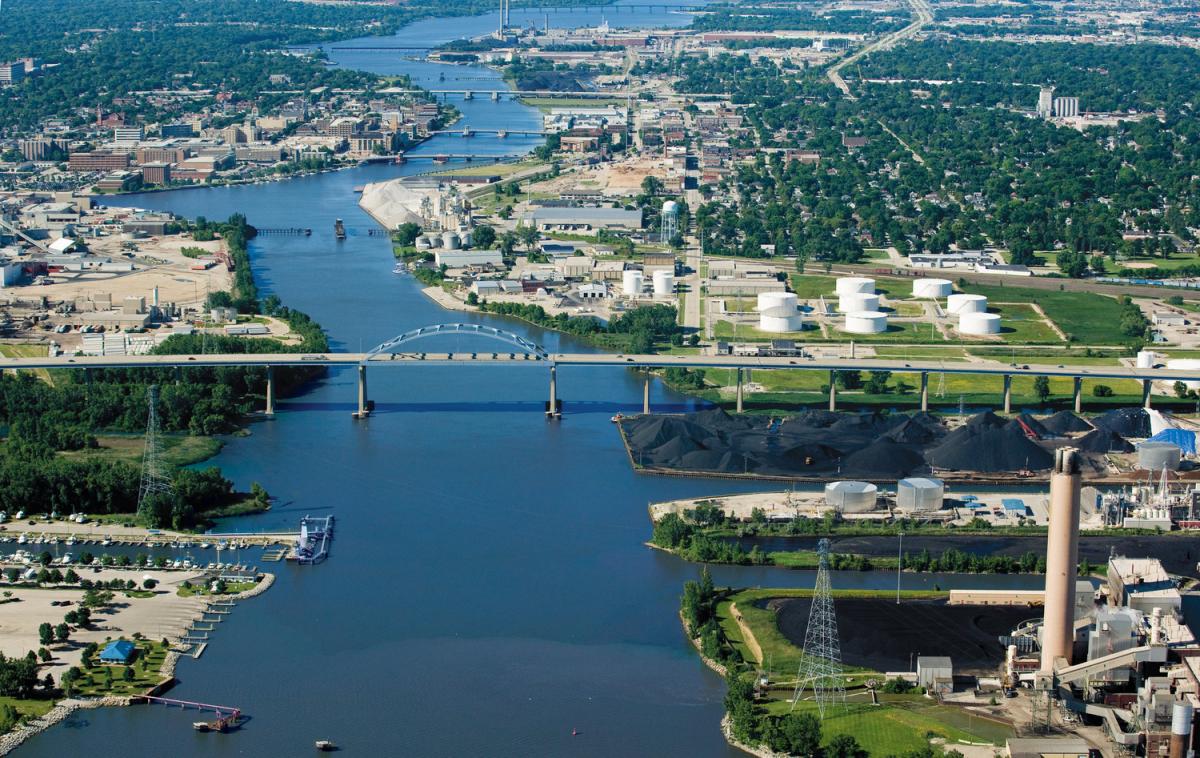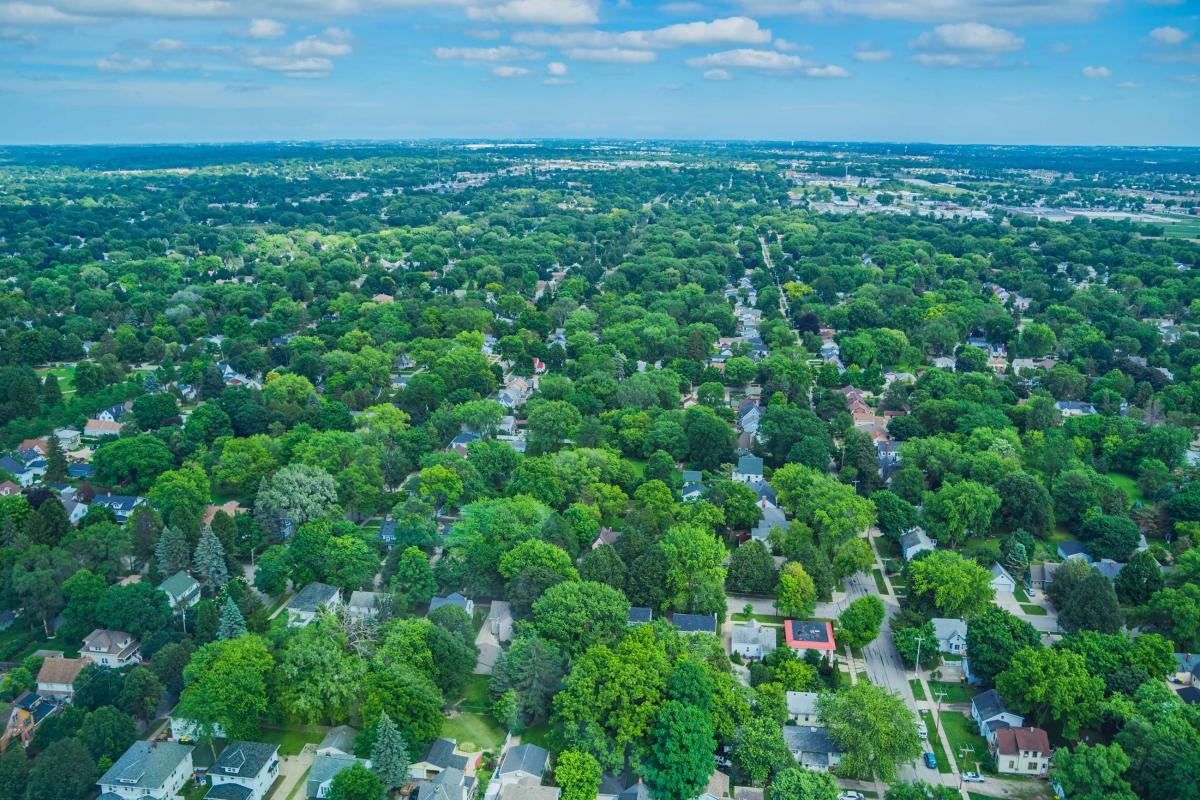
Short Summary
Green Bay, a city north of Milwaukee at the head of Green Bay (a sub basin of Lake Michigan at the mouth of the Fox River, characterized as an estuary), is Wisconsin’s oldest settlement. Known for Lambeau Field and the Green Bay Packers Hall of Fame, Green Bay has a population of nearly 105,000 and continues to be a major shipping center. The city’s forestry division maintains nine urban green spaces (3.34 acres), 13 greenways and drainage ways (689 acres), about 36,000 street trees, and trees present in 70 city parks (1573 acres). In January 2021 city forestry crews began a large scale ash tree removal project in Perkins Park due to emerald ash borer. Green Bay experiences a typical Midwestern, humid continental climate and four distinct seasons, with some differences due to the proximity to Lake Michigan. Understanding tree species vulnerability as well as key climate impacts is critical to the city’s urban forest management and implementation of adaptation strategies.
Tree Species Vulnerability
Species distribution modeling suggests that the changing climate will shift suitable habitat and heat and hardiness zones for various tree species in the Green Bay region. In the tree species list identified for Green Bay, 20 species have a low adaptability score, 69 species have a medium adaptability score, and 47 species have a high adaptability score. Climate change vulnerability of urban trees, including adaptive capacity and zone suitability under low and high emissions scenarios, is outlined in the tree species handout below.


Climate Change Impacts
The state of Wisconsin has warmed by 2-3°F since 1950 and is projected to warm by an additional 2-8°F by 2050. The state has also become 10-20% wetter since 1950 and the annual average is projected to increase. According to the Wisconsin Initiative on Climate Change Impacts (WICCI), the top six climate impacts to the Green Bay region include increasing air and water temperatures, increased precipitation in winter and spring, changes in seasonality leading to decreasing winters and earlier springs, more frequent storm events, lower record and average water levels, and shifting wind fields during the summer from the southeast. In addition, primary stressors specific to the Green Bay ecosystem under climate change include nutrient loading, solids loading, aquatic exotics, and wetland/shoreline filling. Runoff is considered the most significant climate change impact, and the future climate will likely impact the timing of phosphorus and total suspended solids flux to the bay.
Featured Resources
Work With Us
To learn more about this project, contact Leslie.
